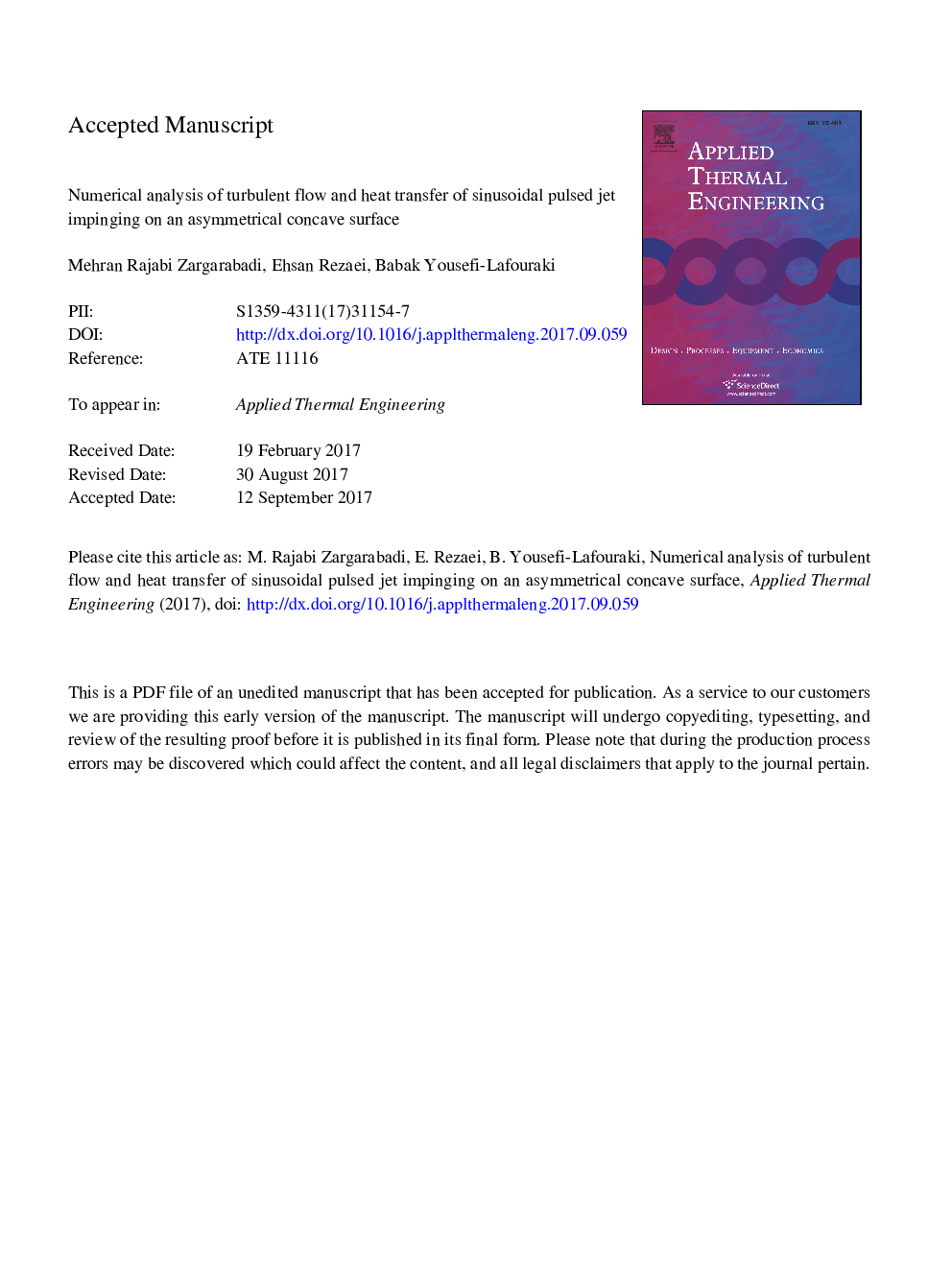| کد مقاله | کد نشریه | سال انتشار | مقاله انگلیسی | نسخه تمام متن |
|---|---|---|---|---|
| 7046622 | 1457101 | 2018 | 14 صفحه PDF | دانلود رایگان |
عنوان انگلیسی مقاله ISI
Numerical analysis of turbulent flow and heat transfer of sinusoidal pulsed jet impinging on an asymmetrical concave surface
ترجمه فارسی عنوان
تجزیه و تحلیل عددی جریان جریانی و انتقال گرما از جت پالس سینوسی که بر سطح مقطع نامتقارن وارد می شود
دانلود مقاله + سفارش ترجمه
دانلود مقاله ISI انگلیسی
رایگان برای ایرانیان
کلمات کلیدی
جت پرشور، انتقال حرارت، ضربان سینوسی، سطح مقطع نامتقارن،
موضوعات مرتبط
مهندسی و علوم پایه
مهندسی شیمی
جریان سیال و فرایندهای انتقال
چکیده انگلیسی
In this paper, analysis of the turbulent flow and heat transfer under pulsating jet impinging on the asymmetrical concave surface has been performed. An asymmetric concave surface with relative curvatures (D/B) of 20 and 60 has been considered. A sinusoidal pulsation is superposed on the mean velocity for normal impingement on the two-dimensional asymmetrical concave surface. The control-volume method with a SIMPLE algorithm has been used to solve the governing equations. The RNG k-ε is employed to model the turbulent behavior of the flow and heat transfer. The effects of amplitude and frequency of pulsation, nozzle-to-surface distance (H/B), relative curvature (D/B), Reynolds number and jet displacement (e/r) on the flow and heat transfer have been investigated. A considerable increase of the instantaneous Nusselt number during the first half of a pulsation cycle is observed in the impingement region. Results show that the use of pulsating jet within the frequency range of 40-160 Hz leads to about 2-8% increase in time-averaged Nusselt number in the wall jet region. The profiles of Nusselt numbers exhibit asymmetrical trends for all Reynolds numbers and jet-to-surface distances (H/B). Numerical results of the present study indicate that the surface with lower relative curvature (D/B = 20) has higher values of the time-averaged Nusselt number. It has been shown that the distribution of time-averaged Nusselt number is affected by the lateral position of the jet (e/r). The optimum lateral distance (e/r = 1.5) is found to increase the averaged Nusselt number by about 5%.
ناشر
Database: Elsevier - ScienceDirect (ساینس دایرکت)
Journal: Applied Thermal Engineering - Volume 128, 5 January 2018, Pages 578-585
Journal: Applied Thermal Engineering - Volume 128, 5 January 2018, Pages 578-585
نویسندگان
Mehran Rajabi Zargarabadi, Ehsan Rezaei, Babak Yousefi-Lafouraki,
